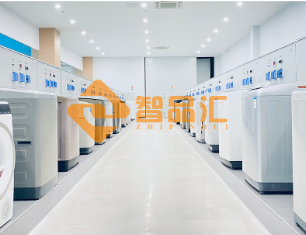How many cycles of rotation can a washing machine drum withstand? Can a refrigerator compressor operate reliably for ten years? After how many meals will the heating element of an electric rice cooker begin to deteriorate? These questions about product lifespan are not based on mere guesswork, but are answered through rigorous testing using specialized equipment in laboratories. During the entire process, from product development to mass production, life-testing equipment serves as a precise "time scale," providing scientific data to define the limits of product durability.
ZhiPinHui can provide professional testing equipment and systems to help you quickly obtain data on the lifespan of household appliances.
Simulating Everyday Use: Accelerating Wear and Tear in the Lab
The lifespan of household appliances often deteriorates due to repeated daily use. The core function of laboratory equipment is to "accelerate" this lengthy wear and tear process. For example, a washing machine drum durability test rig simulates the entire washing cycle—from water filling, rotation, draining, to spinning—according to a preset program, running continuously for dozens of hours daily. A torque sensor monitors motor load changes in real time, and a vibration analyzer records the machine's vibration amplitude. Any abnormal fluctuations in these data indicate that key components are approaching their fatigue limit. Through this "accelerated aging" test, the lifespan performance that would normally take years to verify can be determined within months. For appliances like refrigerators that operate continuously, the compressor life test system demonstrates even greater precision. The equipment places the compressor in a temperature-controlled chamber (-30°C to 40°C), simulating environmental changes across different regions and seasons. Smart valves control the frequency of compressor start-ups and shutdowns. Each start-up and shutdown impacts the compressor's motor windings and bearings. The recorded data—current fluctuations, noise levels, and cooling efficiency decay curves—together depict the compressor's "health lifecycle." Generally, a compressor that remains stable after more than 5,000 start-stop tests meets the basic requirements for 10 years of household use.
Extreme Testing: Probing the Product's "Survival Threshold"
Besides everyday wear and tear, home appliances may encounter various extreme conditions. Life-testing equipment
needs to subject products to "extreme challenges." A typical example is the durability test for the heating plate of a rice
cooker: the device continuously heats the plate to 250°C at maximum power, then rapidly cools it with cold water,
repeating this cycle hundreds of times. The repeated effects of high-temperature oxidation and low-temperature
contraction can quickly reveal material defects in the heating plate—if deformation, coating peeling, or a decrease in
heating efficiency of more than 20% occurs, the product is deemed to have reached its end of life. This test simulates
unexpected situations such as users forgetting to turn off the heat or spills, ensuring the product maintains a safety
margin under extreme use.
The heat exchanger corrosion test chamber for air conditioners focuses on environmental degradation. It simulates the
high-salt fog environment of coastal areas or the acidic rain of industrial cities, maintaining humidity above 90%.
The device periodically samples metal from the heat exchanger surface, using a spectrometer to detect the extent of
corrosion and check for pinholes in the fins or leaks in the pipes. Only heat exchangers that maintain their heat
exchange efficiency after 1,000 hours of salt spray testing can withstand the long-term corrosion of humid coastal
climates. These seemingly "harsh" tests are actually a way to anticipate real-world user conditions.
Data-Driven Approach: From Life Cycle Testing to Quality Enhancement
The value of life cycle testing equipment lies not only in determining "how long a product can last," but also in using
data to identify ways to improve durability. For example, a smart TV screen life analysis system plays high-definition
video continuously for 100,000 hours, recording the brightness decay of different screen areas hourly with a photometer.
This data generates a "brightness decay heatmap." Engineers use this heatmap to adjust the LED distribution in the
backlight module, ensuring consistent aging across the screen and extending the overall lifespan.
In the smart lock industry, a fingerprint recognition module durability tester performs 2,000 fingerprint capture and
recognition operations daily, simulating various interference factors such as dampness, oil, and temperature changes.
The recorded recognition success rate curve precisely identifies the sensor's wear threshold—when the success rate
drops from 99.9% to 95%, it indicates the need to optimize the fingerprint sensor material or algorithm.
This "data-driven R&D" approach transforms product lifespan from a passive outcome into a proactively designed parameter.
From mechanical wear and material aging to environmental degradation and functional decline, the secrets of
appliance lifespan are revealed by laboratory equipment. These devices, using scientific testing methods, translate
abstract "durability" into concrete data, providing consumers with reliable quality assurance and guiding
companies' technological advancements. When we choose home appliances in stores, those labeled "100,000 times
tested" represent the precision and rigor of these laboratory devices, ensuring the long-term reliability that consumers expect.